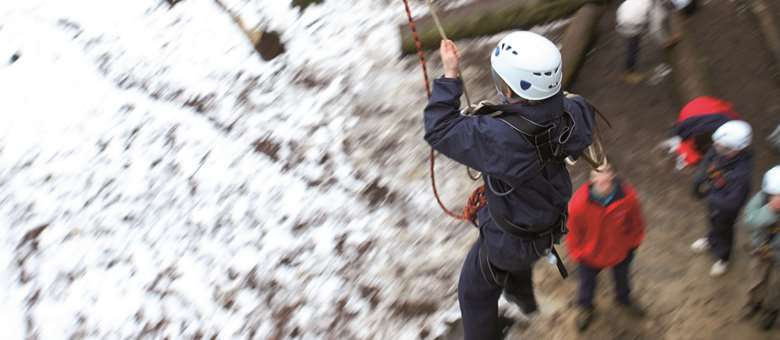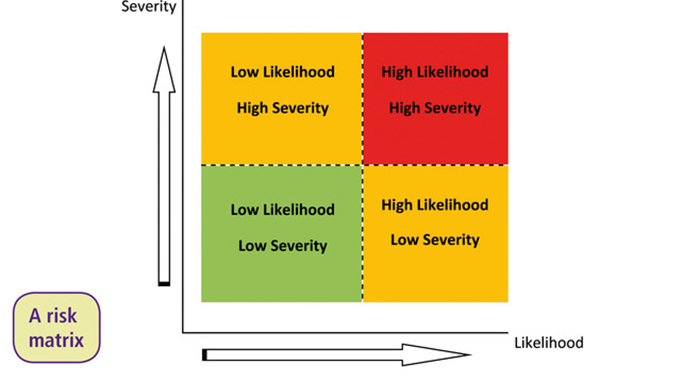Managing your risks doesn't mean stopping your fun
Sponsored
Unity Insurance Services
Monday, November 24, 2014

To encourage the development of young people, youth groups and children's charities deliver many activities that are exciting and challenging and may involve an element of danger. Taking on a fear and conquering it can really help young people grow their confidence and skills, and should be encouraged. However, the line must be drawn between exciting or challenging and just plain dangerous. This is where risk management comes in.
Risk management involves:
• Identifying the hazards that could cause harm to your organisation or people, and
• Controlling or mitigating your risks.
This might result in additional safety measures, taking out insurance or not doing the activity at all. To help you identify and manage your risks, Unity Insurance Services suggests you need to consider the following questions.
Who in your organisation is responsible for risk management?
You have somebody who manages your finance, and somebody who manages your staff and volunteers. But who manages your risks? Depending on the size and complexity of your organisation, this may be one person or a group of people. Although you cannot abdicate responsibility, you can get expert advice from professionals, such as an insurance broker.
What are the hazards and their consequences?
A hazard is anything that could harm your organisation or people associated with it.
Example: For activities, the hazards could be the weather, equipment, its location, experience of the young people taking part or the level of training of adults running it.
Don't just limit this to injuries to people. Think about the hazards to your organisation such as damage to your building, theft of your equipment and money or negative publicity affecting your reputation. Once you have identified the hazards, you should assess their impact on your organisation, and how people may be harmed and what type of injuries may occur. You should consider people with disabilities, contractors, and members of the public.
What is the likelihood of the risks and their severity?

A risk is the chance - high or low - that something will happen. By plotting the nature of individual risks on a risk matrix you can decide whether the risk is acceptable and the priorities that you need to address.
What precautions should you take?
• Reduce the risks you can control
It may not be possible to eliminate a risk entirely. You then need to decide how to control the risk so that the likelihood or severity of harm caused is reduced to an acceptable level. This level is known as your risk appetite. Set up safe work procedures based on your risk assessment and ensure that people understand and follow them.
Example: An activity might need to be changed, which might be a change in route, venue, additional training, an increased adult/child ratio or properly equipped participants.
• Insure those risks that cannot be removed
If you cannot reduce the risk to an acceptable level, you should consider stopping that activity all together or transferring the risk through insurance. Insurance can mitigate most of those risks you do not want to or cannot eliminate or completely control. Insurance can safeguard your organisation and its property against the risk of financial loss arising from damage or theft, accidents or liability claims.
• Plan for the worst
Accidents do happen, even with the best risk management in place. So you should consider what needs to be done if a serious incident, such as a flood or fire occurs, and create a disaster recovery plan.
Case Study:
A youth group recognised the risk of a fire occurring at its meeting place and revised its fire safety policies and procedures to protect its young people and volunteers. However, the cost of replacing the buildings or contents following the fire could not be met from the group's funds. So it took out buildings and equipment insurance to cover the costs of rebuilding and replacing its property should a fire occur.
Record, Realise and Review
Your findings should also be recorded in a risk register. Don't just let it gather dust in a desk drawer. You must act upon it and communicate the safety points. Good risk management works best when it is embedded throughout an organisation. You should review your risk assessment, along with your insurance cover, at least once a year.
Getting the right risk advice and insurance cover
Your risk management and insurance should relate to your own particular circumstances. A specialist insurance broker, who understands how children's organisations operate and the risks they face, can help you get the right risk advice and protection for your organisation.

Unity Insurance Services is a charity owned, specialist insurance broker with particular expertise in children's and young people's charities and youth organisations. For more information on how Unity can help with your insurance needs, visit the Unity Insurance Services website or call us on 0345 040 7702.




